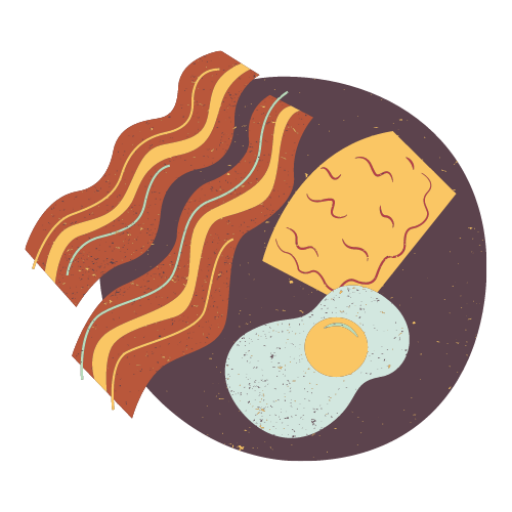Rice cookers are versatile kitchen appliances that can do much more than just prepare rice. These handy devices offer convenient ways to create delicious breakfast dishes with minimal effort. From savory frittatas to fluffy pancakes, rice cookers can simplify morning meal preparation and expand breakfast options.
Rice cooker breakfasts combine convenience with culinary creativity, allowing busy individuals to enjoy tasty homemade meals without spending hours in the kitchen. By repurposing this common appliance, home cooks can whip up nutritious and satisfying breakfast recipes using simple ingredients and easy cooking methods. Rice cookers provide consistent heat and moisture control, making them ideal for preparing a variety of morning dishes beyond traditional rice-based meals.
1) Oatmeal with Brown Sugar and Cinnamon

Rice cookers offer a convenient way to prepare delicious oatmeal. This simple recipe combines the wholesome goodness of oats with the rich flavors of brown sugar and cinnamon.
To start, add oats, water, and a pinch of salt to the rice cooker. The typical ratio is one part oats to two parts water, but this can be adjusted based on preferred consistency.
Next, sprinkle in brown sugar and cinnamon to taste. For added nutrition and flavor, consider including chopped apples or other fruits.
Close the lid and set the rice cooker to the porridge setting if available. Otherwise, the standard rice setting will suffice. The cooking process usually takes about 15-20 minutes.
Once the rice cooker signals completion, open the lid and give the oatmeal a stir. The result is a warm, comforting breakfast with a perfect balance of sweetness and spice.
This method produces consistently creamy oatmeal with minimal effort. It’s an ideal option for busy mornings or when preparing breakfast for multiple people.
2) Vegetable Frittata
A rice cooker can easily produce a delicious vegetable frittata for breakfast. This protein-packed dish combines eggs with an assortment of fresh vegetables and cheese.
To prepare, whisk eggs in a bowl with salt, pepper, and cream if desired. Chop vegetables like onions, peppers, asparagus, or potatoes into small pieces.
Lightly oil the rice cooker insert and add the vegetables. Pour the egg mixture over the top and sprinkle with grated cheese. Close the lid and press the “cook” button.
The frittata will cook for about 15 minutes, or until the eggs are set. The rice cooker’s even heat distribution ensures thorough cooking without burning.
Once done, carefully remove the frittata and slice into wedges. Serve immediately for a nutritious and satisfying breakfast that’s both easy to make and clean up.
This versatile recipe allows for customization with different vegetable combinations or the addition of herbs and spices to suit individual tastes.
3) Japanese Style Rice Porridge
Japanese rice porridge, known as okayu or congee, is a comforting and easily digestible breakfast option. This dish is particularly popular when feeling under the weather or during cold seasons.
To prepare okayu in a rice cooker, use a ratio of 1 part rice to 5-7 parts water for a thicker consistency, or 1:10 for a thinner version. Add washed short-grain rice and water to the cooker, then let it run on the porridge setting.
For added flavor, consider including a pinch of salt or a small piece of kombu (dried kelp) during cooking. Once the cycle is complete, let the porridge sit for a few minutes before serving.
Traditional toppings for okayu include umeboshi (pickled plum), green onions, and a drizzle of soy sauce. For a heartier meal, add a soft-boiled egg or some shredded chicken.
Okayu can also be customized with seasonal ingredients. The Nanakusa Gayu, or Seven Herb Rice Porridge, is a special version eaten on January 7th, incorporating seven specific herbs believed to bring good health for the year ahead.
4) Cheese and Spinach Risotto

Cheese and spinach risotto offers a delicious twist on traditional breakfast fare using a rice cooker. This savory dish combines creamy Arborio rice with melted cheese and nutrient-rich spinach.
To prepare, start by sautéing minced garlic and diced onions in the rice cooker pot using the “Quick Cook” setting. Add Arborio rice and stir to coat with the aromatics.
Pour in vegetable broth and set the rice cooker to its regular cooking cycle. Once the cycle completes, stir in grated Parmesan cheese and chopped fresh spinach leaves.
The residual heat will wilt the spinach and melt the cheese, creating a luscious texture. For added depth, consider incorporating crumbled feta or goat cheese.
This protein-packed breakfast provides a satisfying start to the day. It can be customized with additional vegetables or herbs to suit individual tastes.
Serve the risotto hot, garnished with a sprinkle of black pepper and extra Parmesan if desired. This comforting meal works well for brunch gatherings or as a hearty breakfast option.
5) Banana Bread
Banana bread is a delicious treat that can be easily prepared in a rice cooker. This method offers a convenient alternative to traditional oven baking, especially for those without access to an oven or who prefer not to heat up their kitchen.
To make banana bread in a rice cooker, start by mashing ripe bananas and combining them with melted butter and sugar. Mix in eggs and vanilla extract for added flavor and moisture.
In a separate bowl, sift together flour, baking soda, and salt. Gently fold the dry ingredients into the banana mixture until just combined. Be careful not to overmix, as this can result in tough bread.
Grease the rice cooker bowl and pour in the batter. Set the cooker to the regular rice setting or, if available, the cake function. The cooking time may vary depending on the rice cooker model, but it typically takes about 90 minutes.
Once done, let the banana bread cool in the rice cooker for a few minutes before turning it out onto a plate. Slice and serve warm for a comforting breakfast or snack.
Benefits of Using a Rice Cooker for Breakfast
Rice cookers offer significant advantages for preparing morning meals. They provide a hands-off cooking method and allow for a wide variety of breakfast options beyond just rice dishes.
Convenience and Time-Saving
Rice cookers streamline breakfast preparation, reducing active cooking time. Users can add ingredients, press a button, and focus on other morning tasks while the appliance does the work. This set-it-and-forget-it approach eliminates the need for constant monitoring or stirring.
Many rice cookers have timers, allowing breakfast to be ready upon waking. This feature is particularly useful for dishes like oatmeal or frittatas that benefit from longer cooking times.
Rice cookers often have non-stick inner pots, making cleanup quick and easy. This saves valuable time during busy mornings when every minute counts.
Versatility of Recipes
Rice cookers accommodate a surprising range of breakfast dishes. Beyond traditional rice, they excel at preparing oatmeal, quinoa, and other grains. These versatile appliances can also cook eggs in various forms, from simple hard-boiled to fluffy frittatas.
Sweet options like pancakes and banana bread are possible in a rice cooker. The even heat distribution ensures consistent results without the risk of burning.
For savory breakfasts, rice cookers can prepare dishes like tamago kake gohan, a Japanese-style egg rice. They’re also suitable for steaming vegetables or cooking sausages to accompany other breakfast items.
Rice cookers allow for creative combinations, such as coconut rice or Mexican-style rice, adding variety to morning meals.
Nutritional Advantages
Rice cooker breakfasts offer unique nutritional benefits. They help preserve nutrients in ingredients and make portion control easier, contributing to a balanced diet.
Maintaining Nutrient Integrity
Rice cookers use gentle, moist heat to cook food, which helps retain more nutrients compared to other cooking methods. Vitamins and minerals are less likely to be lost through evaporation or breakdown from high temperatures.
This cooking method is particularly beneficial for water-soluble vitamins like B-complex and vitamin C. Vegetables cooked in a rice cooker retain more of their natural flavors and textures, encouraging increased consumption of nutrient-rich foods.
Protein-rich ingredients like eggs and lean meats also benefit from the rice cooker’s even heating, ensuring they’re fully cooked without becoming tough or dry.
Portion Control
Rice cookers come with clear markings and measurement guides, making it easy to prepare precise portions. This feature is especially helpful for controlling carbohydrate intake from rice or oatmeal.
By using the rice cooker’s measuring cup and lines, you can consistently prepare the right amount of food for your nutritional needs. This precision helps prevent overeating and supports weight management goals.
Many rice cookers also have specific settings for different grains, allowing for accurate cooking of nutritious alternatives like quinoa or barley. This versatility encourages variety in your diet, ensuring a wider range of nutrients.
Tips for Perfect Breakfast Recipes

Mastering breakfast recipes in your rice cooker requires attention to a few key factors. Selecting the right appliance and ingredients can significantly enhance your results.
Choosing the Right Rice Cooker
Rice cookers come in various sizes and models, each with unique features. For breakfast recipes, opt for a cooker with a non-stick inner pot to prevent food from sticking. Look for models with a delay timer function, allowing you to set up ingredients the night before.
Multi-function cookers often include settings for porridge or oatmeal, ideal for breakfast dishes. Consider a cooker with a steaming basket for versatile meal options. The capacity of your rice cooker should match your household’s needs.
A keep-warm function is valuable for maintaining food temperature if family members eat at different times. Some advanced models offer specific breakfast settings, simplifying the cooking process.
Experimenting with Ingredients
Rice cookers accommodate a wide range of ingredients beyond traditional rice. Start with familiar breakfast staples like oats, eggs, and milk. Experiment with different grains such as quinoa or millet for varied textures and nutritional profiles.
Fresh fruits add natural sweetness and flavor to breakfast dishes. Try mixing in berries, diced apples, or sliced bananas. Nuts and seeds provide crunch and healthy fats. Consider almonds, walnuts, or chia seeds for added nutrition.
For savory breakfasts, incorporate vegetables like spinach or diced bell peppers. Proteins such as ham or tofu can create more substantial meals. Experiment with spices and seasonings to enhance flavors. Cinnamon, vanilla, or a pinch of salt can transform simple ingredients.
Don’t hesitate to adapt traditional stovetop recipes for your rice cooker. Many pancake and frittata recipes work well with minor adjustments.




